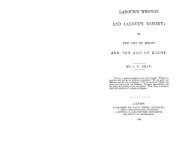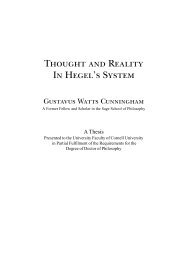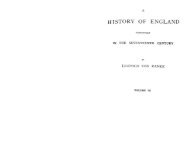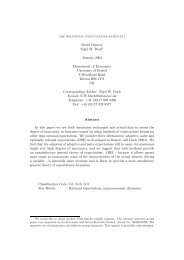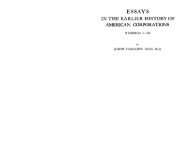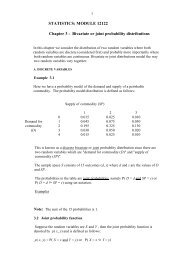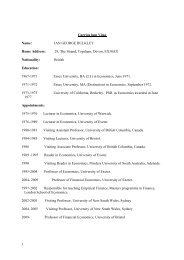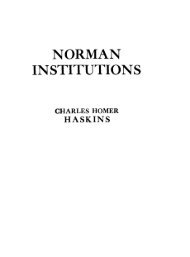working life of women seventeenth century - School of Economics ...
working life of women seventeenth century - School of Economics ...
working life of women seventeenth century - School of Economics ...
You also want an ePaper? Increase the reach of your titles
YUMPU automatically turns print PDFs into web optimized ePapers that Google loves.
8 INTRODUCTORY INTRODUCTORYDomestic and family industry existed side by sideduring the middle ages ; for example, brewing, baking,spinning, cheese and butter making were conductedboth as domestic arts and for .industrial purposes.Both were gradually supplanted by capitalisticindustry, the germ <strong>of</strong> which was apparently introducedabout the thirteenth <strong>century</strong>, and graduallydeveloped strength for a more rapid advance in the<strong>seventeenth</strong> <strong>century</strong>.While the development <strong>of</strong> capitalistic industrywill always be one <strong>of</strong> the most interesting subjects forthe student <strong>of</strong> political economy, its effect upon theposition and capacity <strong>of</strong> <strong>women</strong> becomes <strong>of</strong> paramountimportance to the sociologist.This effect must be considered from three standpoints:-(I) Does the capitalistic organisation <strong>of</strong> industryincrease or diminish <strong>women</strong>'s productive capacity ?(2) Does it make them more or less successful intheir special function <strong>of</strong> motherhood ?(3) Does it strengthen or weaken their influenceover morals and their position in the generalorganisation <strong>of</strong> human society ?These three questions were not asked by the menwho were actors in the Industrial Revolution, andapparently their importance has hitherto escaped thenotice <strong>of</strong> those who have written chapters <strong>of</strong> itshistory.Mankind, lulled by its faith in the " eternal feminine" has reposed in the belief that <strong>women</strong> remainthe same, however completely their environment mayalter, and having once named a place " the home "thinks it makes no difference whether it consists <strong>of</strong> aworkshop or a boudoir. But the effect <strong>of</strong> thedifference in the wages, as the same amount <strong>of</strong> money can be used to support oneindividual in comfort or a family in penury. In modern times the law recognises atheoretic obligation on the part <strong>of</strong> a man to srlpport his children, but has no powerto divert his wage3 to that purpose. His wages are in fact recognised as his individualproperty. The position <strong>of</strong> the family was very different in the eeventeenth centuv.Industrial Revolution on home <strong>life</strong>, and throughthat upon the development and characters <strong>of</strong><strong>women</strong> and upon their productive capacity, deeplyconcerns the sociologist, for the increased productivecapacity <strong>of</strong> mankind may be dearly bought by thedisintegration <strong>of</strong> social organisation and a lowering<strong>of</strong> <strong>women</strong>'s capacity for motherhood.The succeeding chapters will show how the spread<strong>of</strong> capitalism affected the productive capacity <strong>of</strong><strong>women</strong> :-(I) In the capitalist class where the energy andhardiness <strong>of</strong> Elizabethan ladies gave way beforethe idleness a d pleasure which characterised theRestoration period.(2) In agriculture, where the wives <strong>of</strong> the richeryeomen were withdrawing from farm work and wherethere already existed a considerable number <strong>of</strong> labourersdependent entirely on wages, whose wives having nogardens or pastures were unable to supply the families'food according to old custom. The wages <strong>of</strong> such<strong>women</strong> were too irregular and too low to maintainthem and their children in a state <strong>of</strong> efficiency, andthrough semi-starvation their productive powers andtheir capacity for motherhood were greatly reduced.(3) In the Textile Trades where the demandfor thread and yarn which could only be producedby <strong>women</strong> and children was expanding.The convenience <strong>of</strong> spinning as an employmentfor oddminutes and the mechanical character <strong>of</strong> itsmovements which made no great tax on eye or brain,rendered it the most adaptable <strong>of</strong> all domestic artsto the necessities <strong>of</strong> the mother. Spinning becamethe chief resource for the married <strong>women</strong> whowere losing their hold on other industries, but itsreturn in money value was too low to render themindependent <strong>of</strong> other means <strong>of</strong> support. There islittle evidence to suggest that <strong>women</strong> shared, inthe capitalistic enterprises <strong>of</strong> the clothiers during



